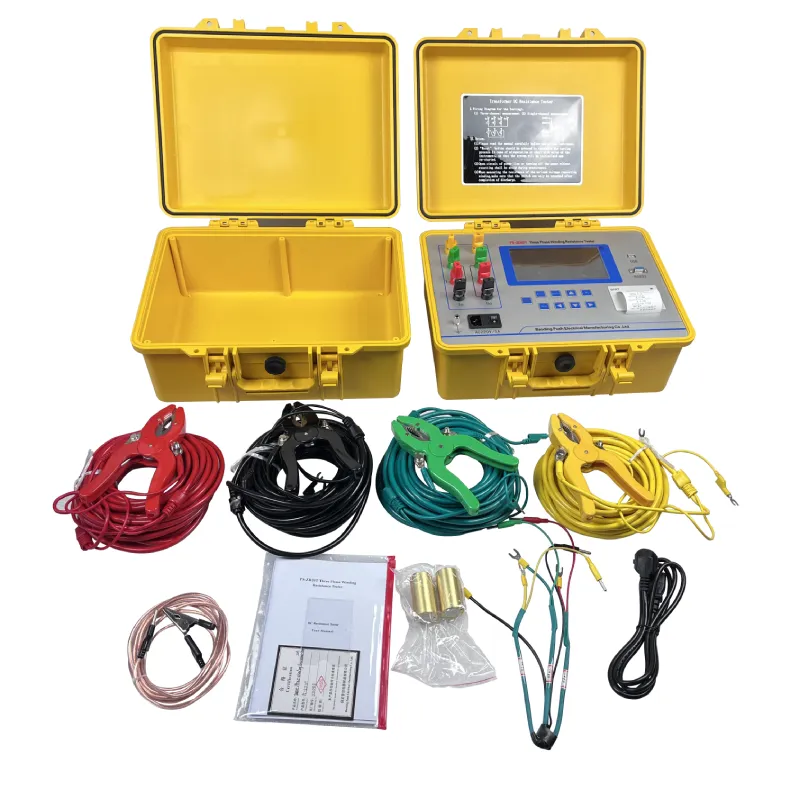 English
English


cable hipot test standard
Understanding the Cable Hipot Test Standard Importance and Implementation
The Cable Hipot Test, or High Potential Test, is a critical procedure used in the electrical industry to ensure the integrity and safety of electrical cables. This test is particularly crucial for medium and high voltage cables, where insulation failure could lead to catastrophic failures, safety hazards, and significant financial losses. The practice's standards are established to guarantee that the cables can withstand voltage stresses beyond their normal operating conditions without breaking down or developing defects.
What is the Cable Hipot Test?
The Cable Hipot Test involves applying a high voltage to a cable’s insulation while monitoring its performance. The idea is to assess whether the insulation material can endure the applied voltage without allowing excessive leakage current to flow through the insulation. The test can help detect weaknesses or defects within the insulation, such as porosity, contamination, or other mechanical or chemical issues that could lead to future failures.
Typically, the test applies a voltage that is several times higher than the normal operating voltage of the cable. For example, a common testing voltage might be 2-3 times the cable's rated voltage for a short duration, often ranging from one minute to several minutes. By doing this, technicians can identify any potential breakdown points in the insulation before the cable is put into service.
Importance of Cable Hipot Testing
1. Safety Assurance One of the primary reasons for conducting cable hipot tests is to ensure safety. Insulation failures can lead to electric shocks, fires, and explosions. By performing regular hipot tests, companies can ensure that their systems are safe for both workers and equipment.
2. Preventive Maintenance Cable hipot testing serves as a preventive maintenance tool, helping to detect issues before they lead to failures. Early detection of insulation problems can save money by preventing costly repairs and downtime.
3. Compliance with Industry Standards Various standards, such as IEEE, IEC, and NEMA, set specific performance criteria for electrical cables. Performing hipot tests ensures compliance with these standards, which is crucial for obtaining necessary certifications and ensuring the reliability of electrical systems.
4. Extending Cable Life By identifying and addressing insulation weaknesses before they result in failure, hipot testing can contribute to the overall longevity of electrical cables, optimizing asset management within organizations.
cable hipot test standard

Implementation of the Cable Hipot Test
When implementing the cable hipot test, several steps are necessary to ensure accuracy and safety
- Preparation Before testing, it’s important to prepare the cable by ensuring it is clean and dry. Environmental factors such as humidity can affect the results, so testing should be conducted under controlled conditions.
- Calibration of Equipment The hipot testing equipment should be calibrated correctly to ensure that the voltage applied is accurate and consistent.
- Conducting the Test During the test, the high voltage is applied gradually while monitoring the leakage current. The test should be conducted for the specified duration, and any abnormal readings should be noted for further investigation.
- Post-Test Analysis After conducting the test, it is essential to analyze the results to determine if the cable passed or failed. Any failures must be documented, and corrective measures should be undertaken, which may involve repairing or replacing the cable.
- Documentation and Reporting Finally, thorough documentation of test results is crucial for compliance and future reference. This record helps maintain a history of cable performance and supports ongoing preventive maintenance programs.
Conclusion
The Cable Hipot Test is an essential procedure that plays a vital role in the safety and reliability of electrical systems. By adhering to established standards and implementing effective testing strategies, organizations can proactively manage their electrical assets, ensuring safety and operational efficiency. As technology evolves and the demand for safer and more reliable electrical infrastructure increases, the significance of the Cable Hipot Test will continue to grow, making it an indispensable part of electrical engineering practices.
-
Differences between open cup flash point tester and closed cup flash point testerNewsOct.31,2024
-
The Reliable Load Tap ChangerNewsOct.23,2024
-
The Essential Guide to Hipot TestersNewsOct.23,2024
-
The Digital Insulation TesterNewsOct.23,2024
-
The Best Earth Loop Impedance Tester for SaleNewsOct.23,2024
-
Tan Delta Tester--The Essential Tool for Electrical Insulation TestingNewsOct.23,2024





